|
|
|

|
|||||

|
|

Construction materials company Vulcan Materials (NYSE:VMC) announced better-than-expected revenue in Q3 CY2025, with sales up 14.4% year on year to $2.29 billion. Its non-GAAP profit of $2.84 per share was 4.5% above analysts’ consensus estimates.
Is now the time to buy Vulcan Materials? Find out by accessing our full research report, it’s free for active Edge members.
Founded in 1909, Vulcan Materials (NYSE:VMC) is a producer of construction aggregates, primarily crushed stone, sand, and gravel.
Examining a company’s long-term performance can provide clues about its quality. Any business can put up a good quarter or two, but many enduring ones grow for years. Luckily, Vulcan Materials’s sales grew at a solid 10.1% compounded annual growth rate over the last five years. Its growth beat the average industrials company and shows its offerings resonate with customers.
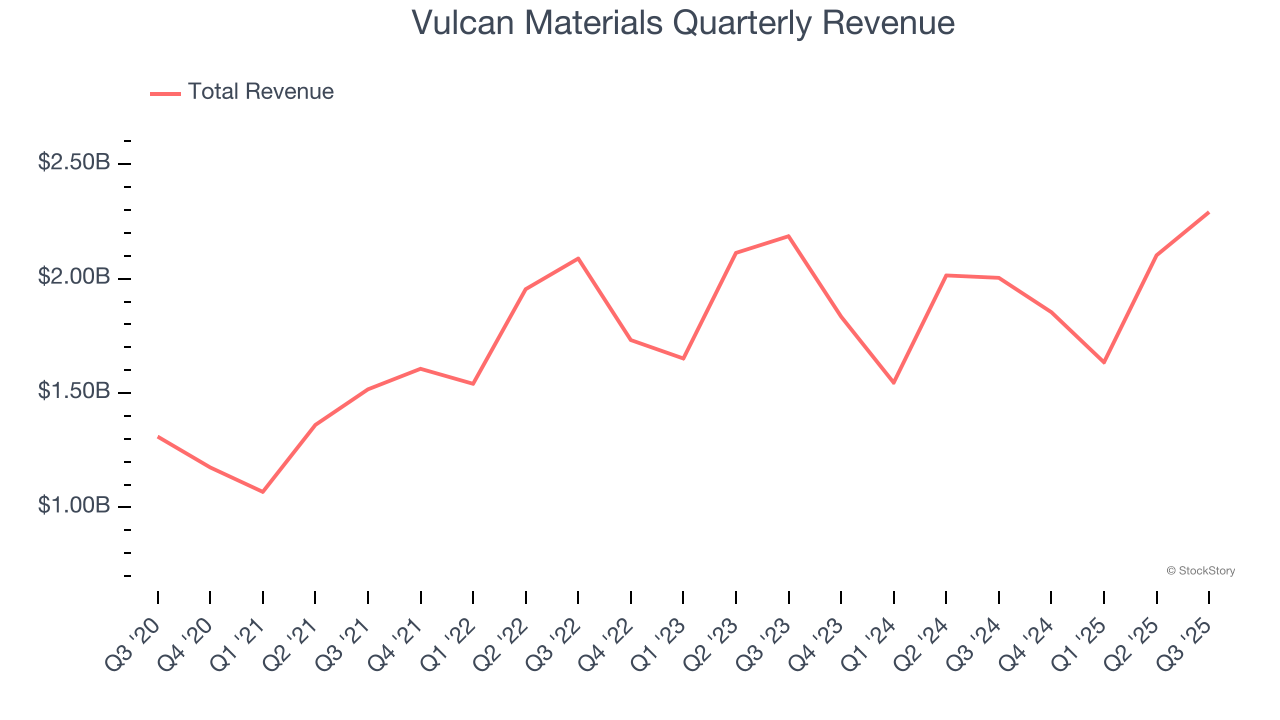
We at StockStory place the most emphasis on long-term growth, but within industrials, a half-decade historical view may miss cycles, industry trends, or a company capitalizing on catalysts such as a new contract win or a successful product line. Vulcan Materials’s recent performance shows its demand has slowed as its annualized revenue growth of 1.3% over the last two years was below its five-year trend.
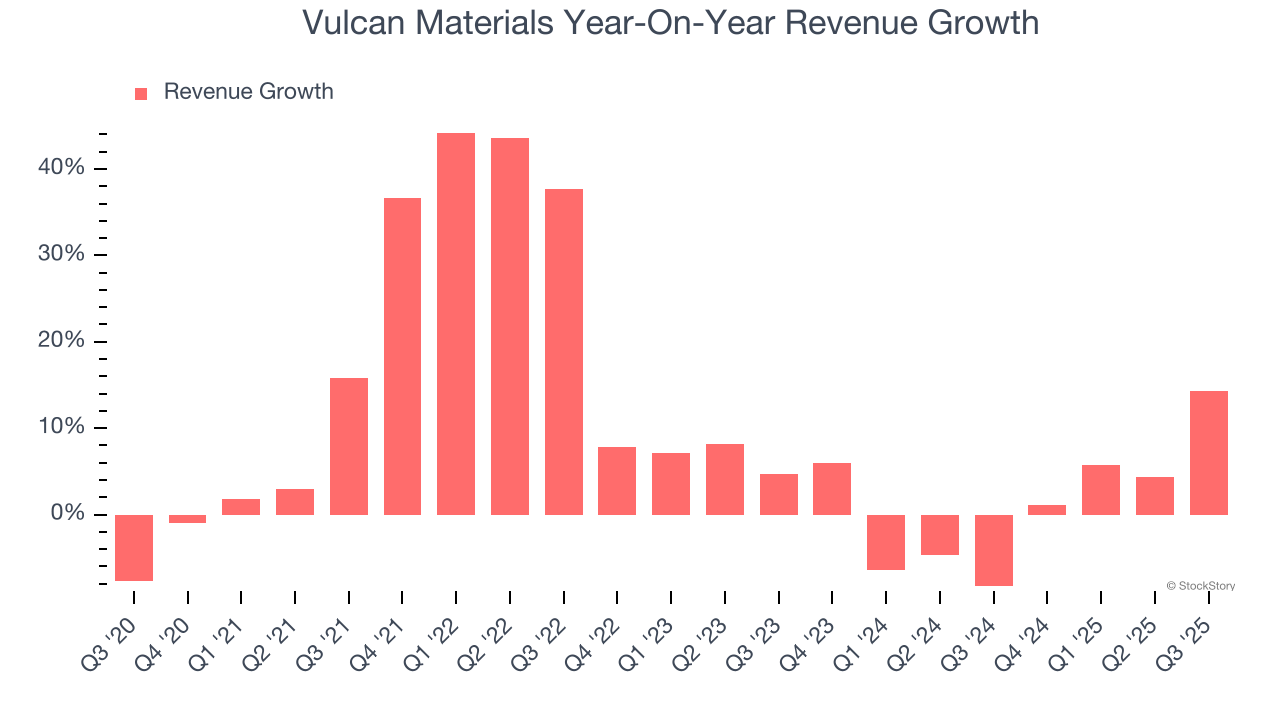
We can better understand the company’s revenue dynamics by analyzing its number of tons shipped, which reached 64.7 million in the latest quarter. Over the last two years, Vulcan Materials’s tons shipped averaged 1.6% year-on-year declines. Because this number is lower than its revenue growth during the same period, we can see the company’s monetization has risen.
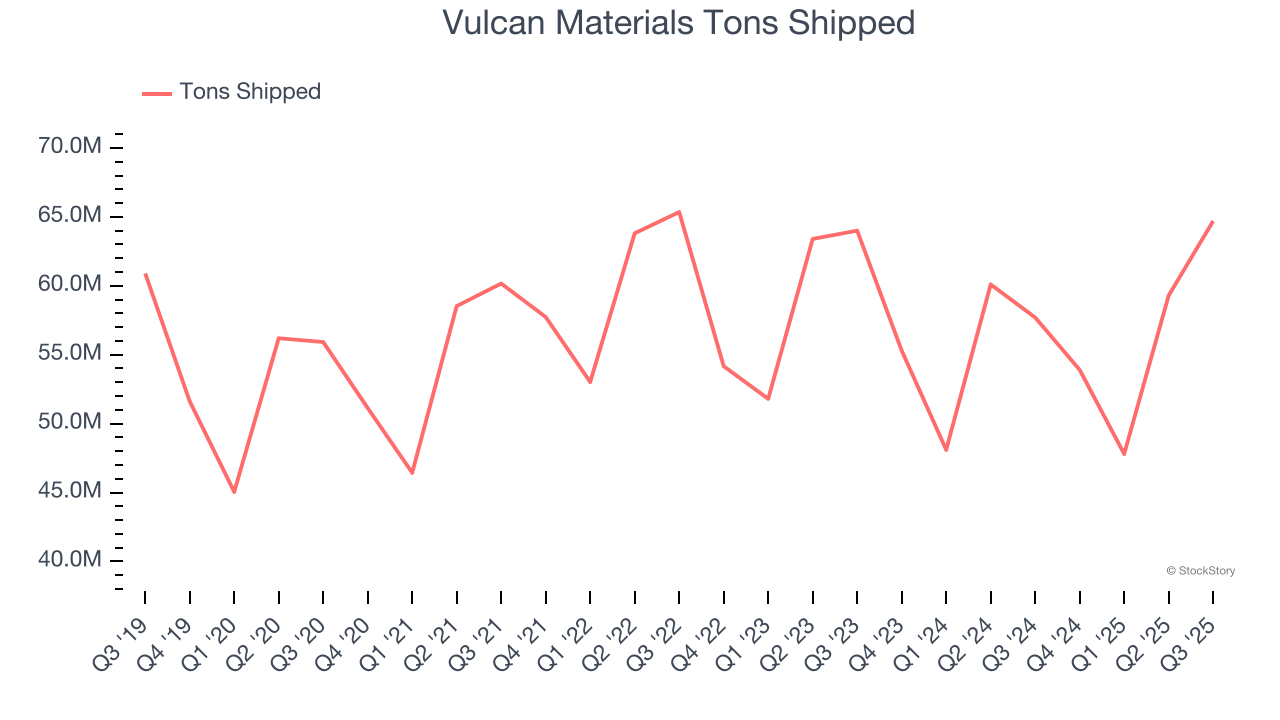
This quarter, Vulcan Materials reported year-on-year revenue growth of 14.4%, and its $2.29 billion of revenue exceeded Wall Street’s estimates by 0.8%.
Looking ahead, sell-side analysts expect revenue to grow 8.3% over the next 12 months, an improvement versus the last two years. This projection is above average for the sector and implies its newer products and services will catalyze better top-line performance.
Here at StockStory, we certainly understand the potential of thematic investing. Diverse winners from Microsoft (MSFT) to Alphabet (GOOG), Coca-Cola (KO) to Monster Beverage (MNST) could all have been identified as promising growth stories with a megatrend driving the growth. So, in that spirit, we’ve identified a relatively under-the-radar profitable growth stock benefiting from the rise of AI, available to you FREE via this link.
Operating margin is a key measure of profitability. Think of it as net income - the bottom line - excluding the impact of taxes and interest on debt, which are less connected to business fundamentals.
Vulcan Materials has been a well-oiled machine over the last five years. It demonstrated elite profitability for an industrials business, boasting an average operating margin of 17.6%. This result was particularly impressive because of its low gross margin, which is mostly a factor of what it sells and takes huge shifts to move meaningfully. Companies have more control over their operating margins, and it’s a show of well-managed operations if they’re high when gross margins are low.
Analyzing the trend in its profitability, Vulcan Materials’s operating margin rose by 1.4 percentage points over the last five years, as its sales growth gave it operating leverage.
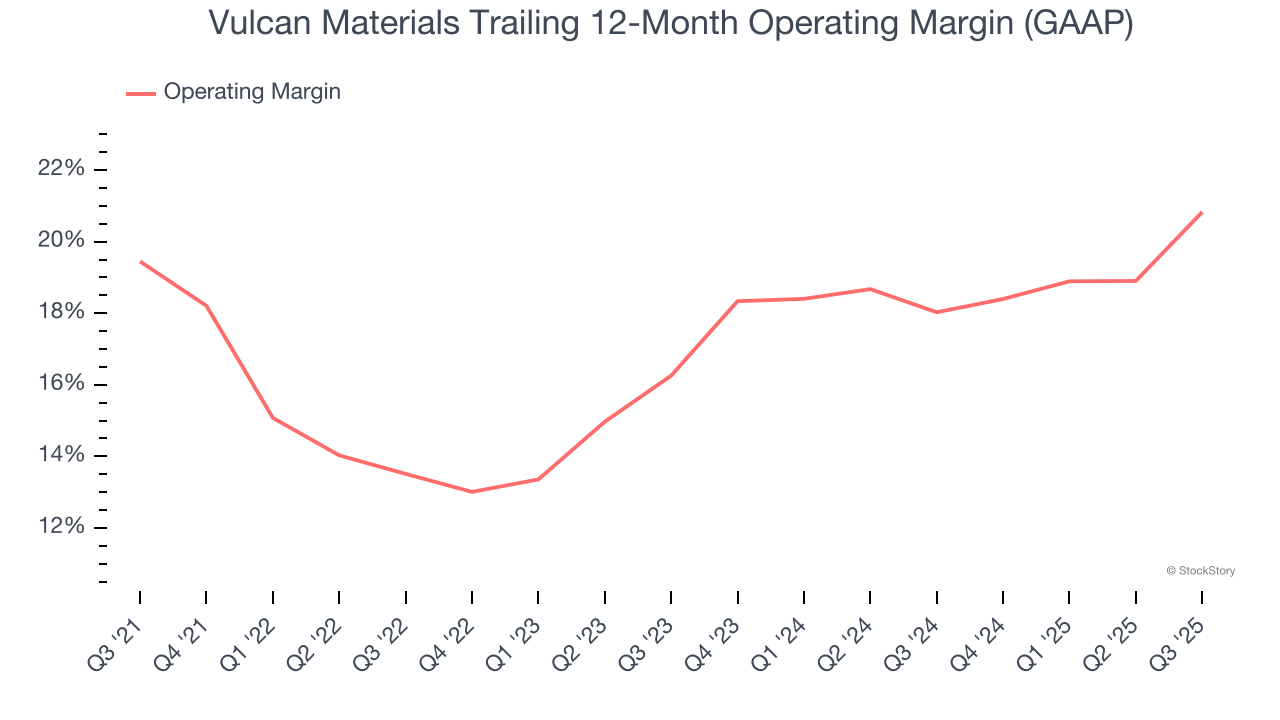
This quarter, Vulcan Materials generated an operating margin profit margin of 23.7%, up 6.9 percentage points year on year. The increase was solid, and because its operating margin rose more than its gross margin, we can infer it was more efficient with expenses such as marketing, R&D, and administrative overhead.
We track the long-term change in earnings per share (EPS) for the same reason as long-term revenue growth. Compared to revenue, however, EPS highlights whether a company’s growth is profitable.
Vulcan Materials’s EPS grew at a remarkable 12.4% compounded annual growth rate over the last five years, higher than its 10.1% annualized revenue growth. This tells us the company became more profitable on a per-share basis as it expanded.
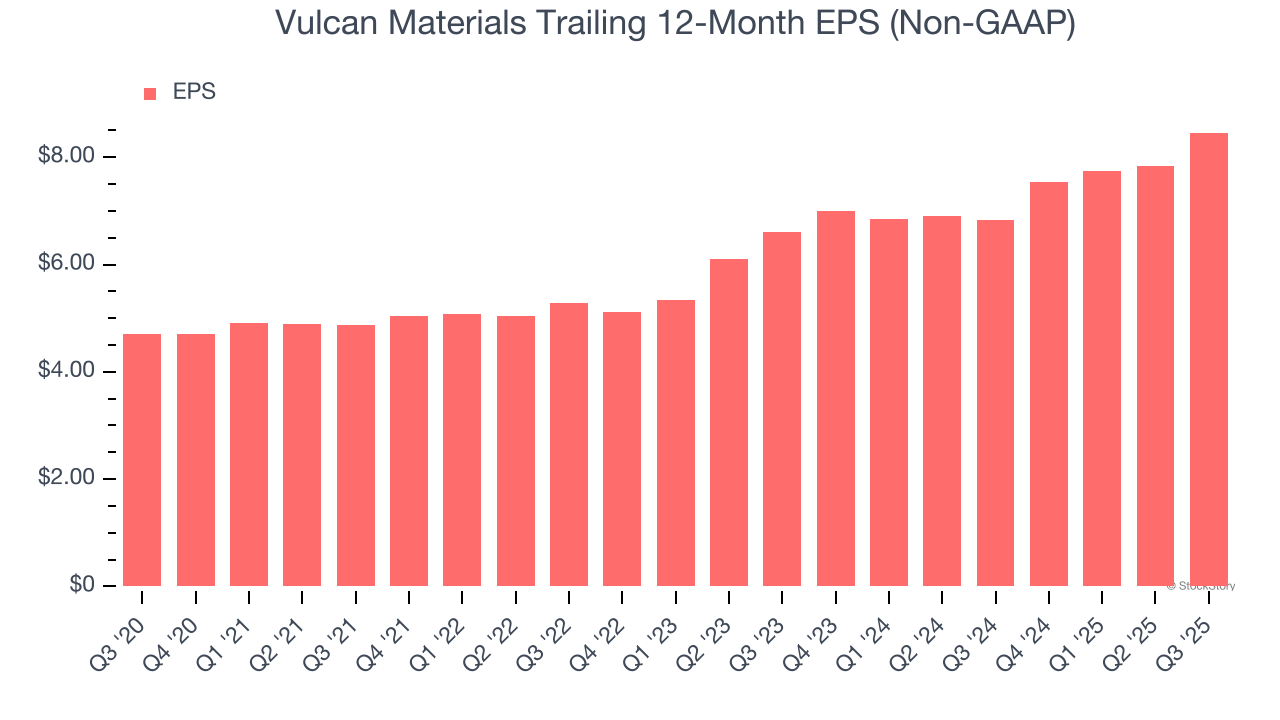
We can take a deeper look into Vulcan Materials’s earnings to better understand the drivers of its performance. As we mentioned earlier, Vulcan Materials’s operating margin expanded by 1.4 percentage points over the last five years. This was the most relevant factor (aside from the revenue impact) behind its higher earnings; interest expenses and taxes can also affect EPS but don’t tell us as much about a company’s fundamentals.
Like with revenue, we analyze EPS over a shorter period to see if we are missing a change in the business.
For Vulcan Materials, its two-year annual EPS growth of 13.1% is similar to its five-year trend, implying strong and stable earnings power.
In Q3, Vulcan Materials reported adjusted EPS of $2.84, up from $2.22 in the same quarter last year. This print beat analysts’ estimates by 4.5%. Over the next 12 months, Wall Street expects Vulcan Materials’s full-year EPS of $8.46 to grow 13.5%.
It was encouraging to see Vulcan Materials beat analysts’ EBITDA expectations this quarter. We were also happy its revenue narrowly outperformed Wall Street’s estimates. On the other hand, its full-year EBITDA guidance slightly missed. Zooming out, we think this was a mixed quarter. The stock remained flat at $295 immediately following the results.
So do we think Vulcan Materials is an attractive buy at the current price? When making that decision, it’s important to consider its valuation, business qualities, as well as what has happened in the latest quarter. We cover that in our actionable full research report which you can read here, it’s free for active Edge members.
| Dec-09 | |
| Dec-08 | |
| Dec-04 | |
| Nov-21 | |
| Nov-20 | |
| Nov-20 | |
| Nov-19 | |
| Nov-19 | |
| Nov-14 | |
| Nov-13 | |
| Nov-10 | |
| Nov-06 | |
| Nov-04 | |
| Nov-03 | |
| Oct-31 |
Join thousands of traders who make more informed decisions with our premium features. Real-time quotes, advanced visualizations, backtesting, and much more.
Learn more about FINVIZ*Elite